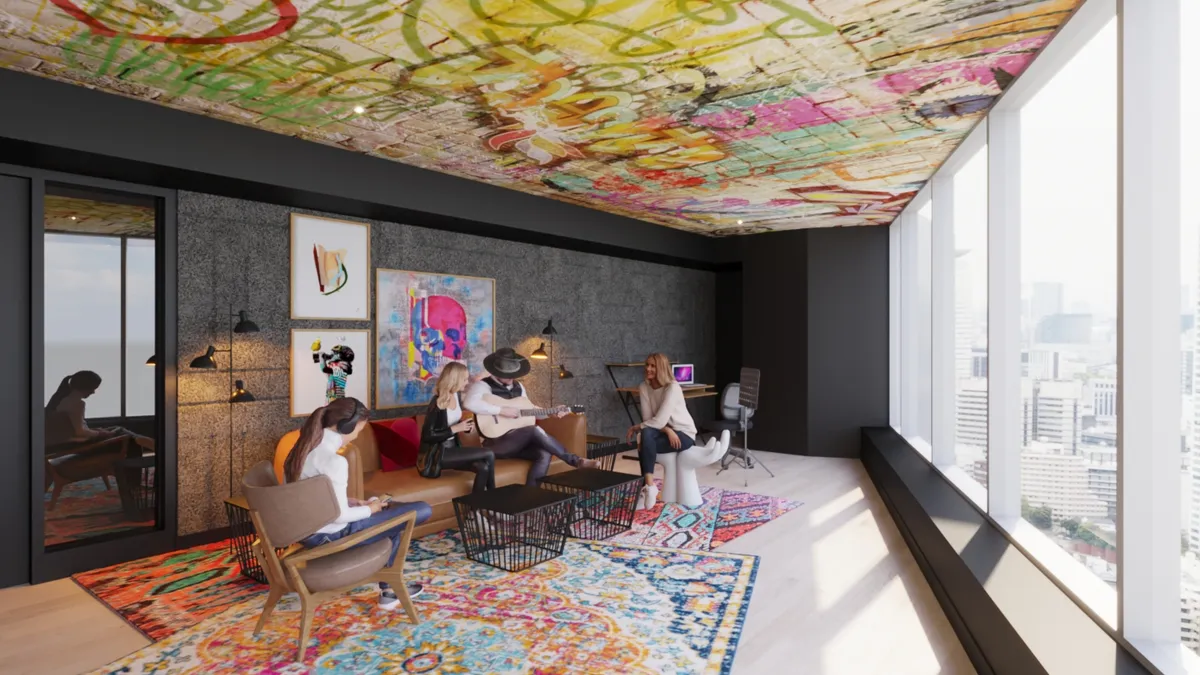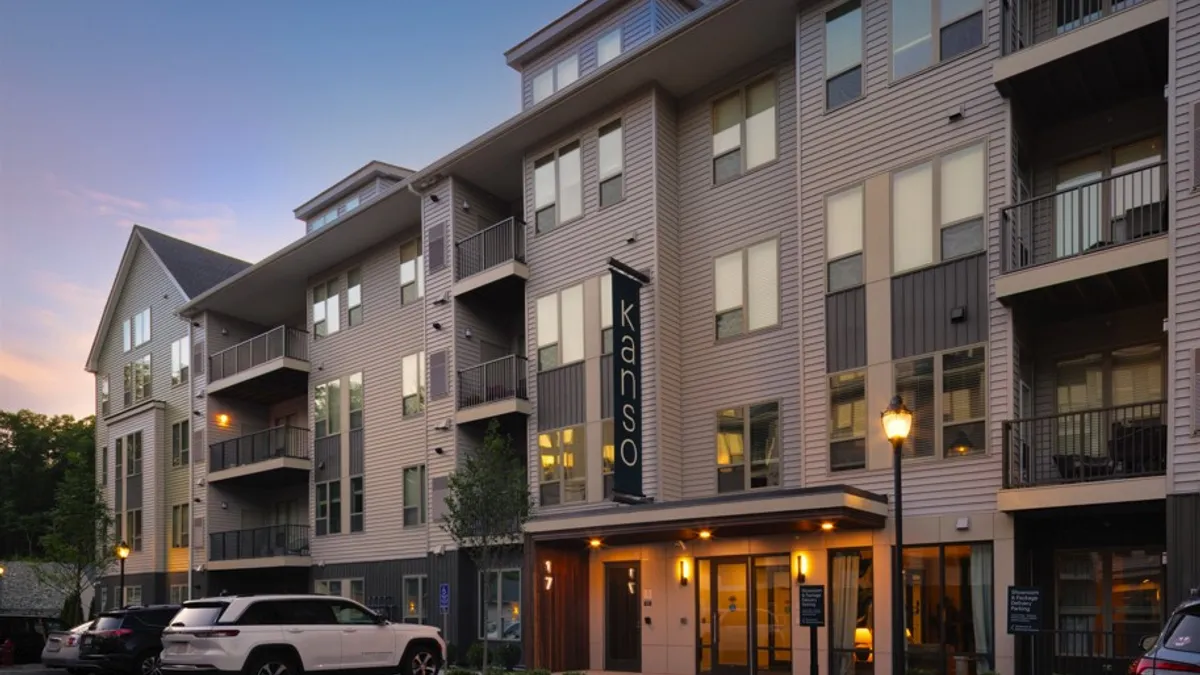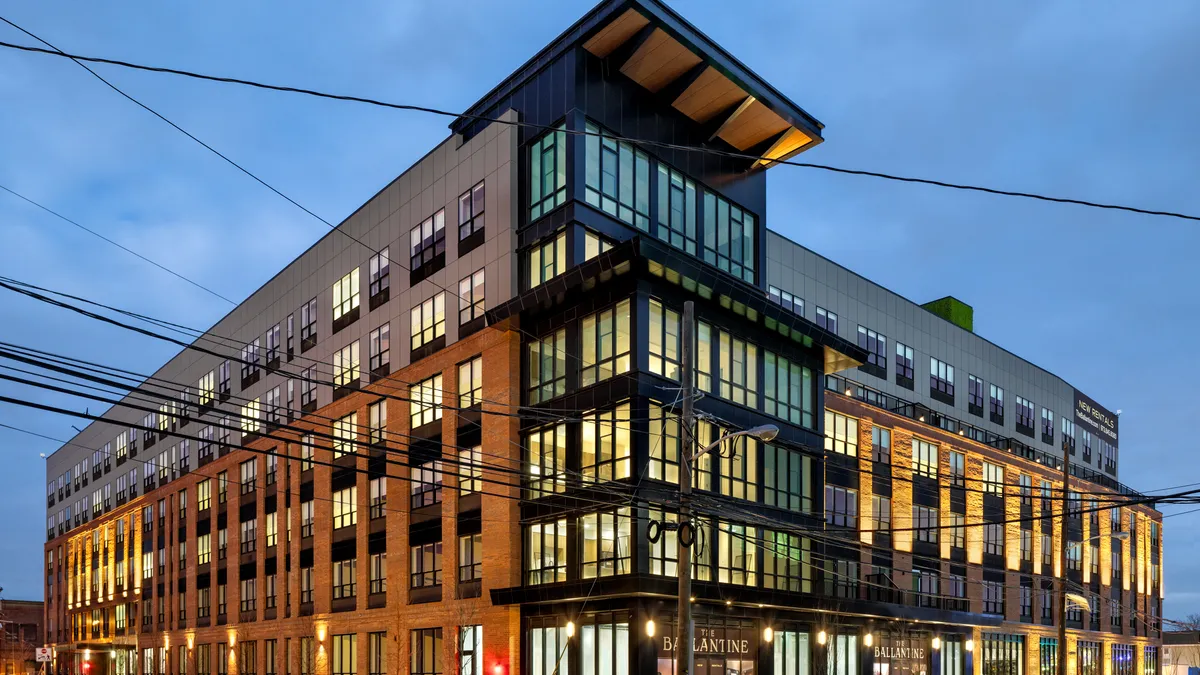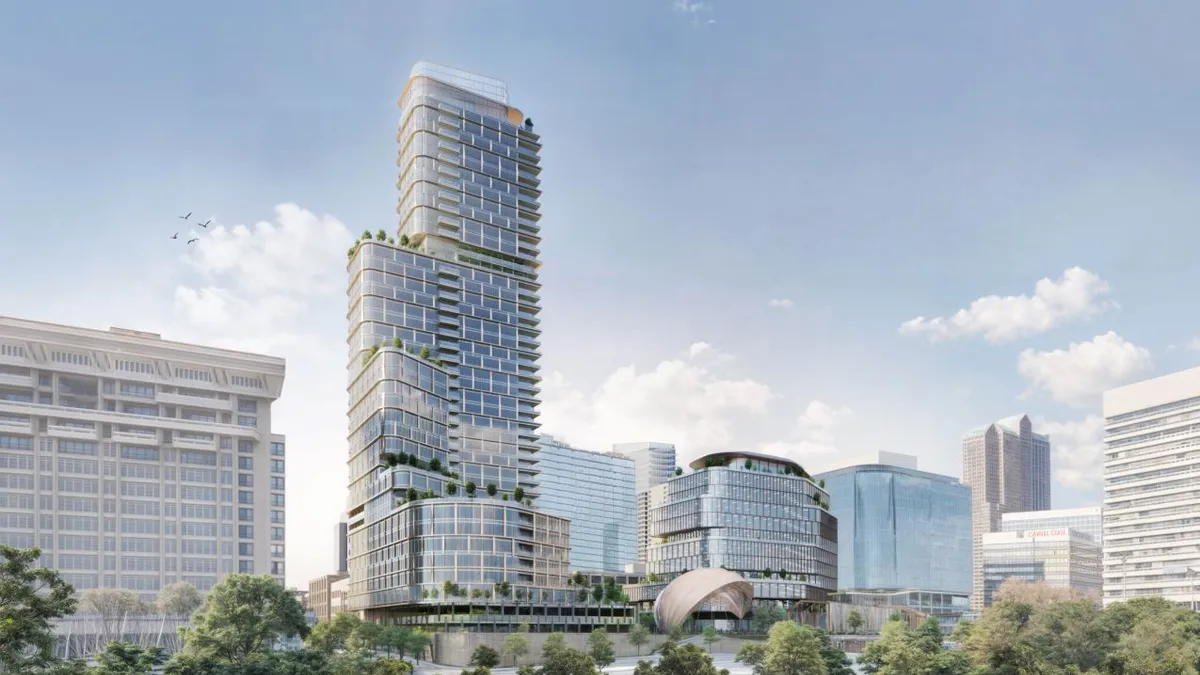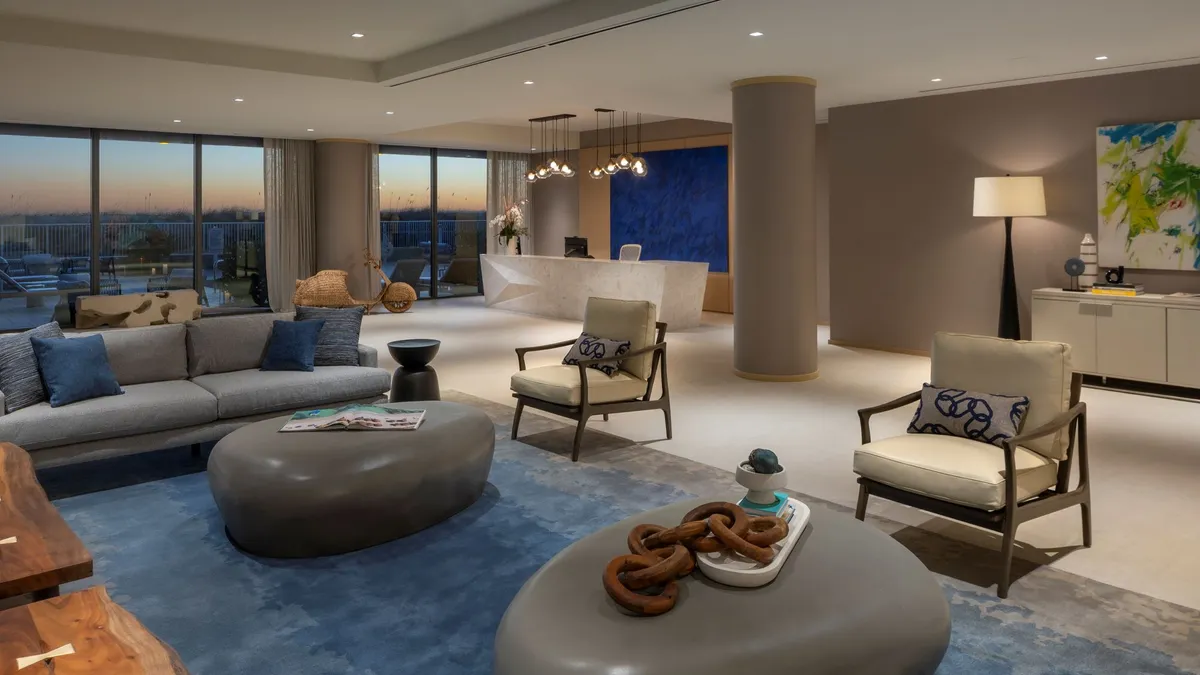This story is the third in a series of three looking at what young renters want in an apartment and how to market to them. Click here for the first article and here for the second.
During the “amenities arms race” of the 2010s, apartment developers strove to offer large quantities of common spaces in order to attract and retain renters. However, in recent years — and following a long period of closure for many of these amenities during the COVID-19 lockdown — this strategy of “more is better” has become a bit more complex.
Amenities like game rooms, resort-style pools and petwashing stations are helpful for luring young renters, but they are only one part of the equation. For the next generation of renters, the experience of living in a given area or community is just as important, and the location of a property and the lifestyle available in the surrounding area complement the on-site activities and amenities.
“It’s so much about that locale, and that connection. And authenticity is a big piece of that,” Leah Wheary Brown, vice president of interior design strategy/Urban Living Interiors at Portland, Oregon-based firm Ankrom Moisan, told Multifamily Dive. “People who are really protective of their time and their money want to put it in a place that's going to support themselves and their lifestyle. The address and the property then becomes a reflection of how they see themselves.”
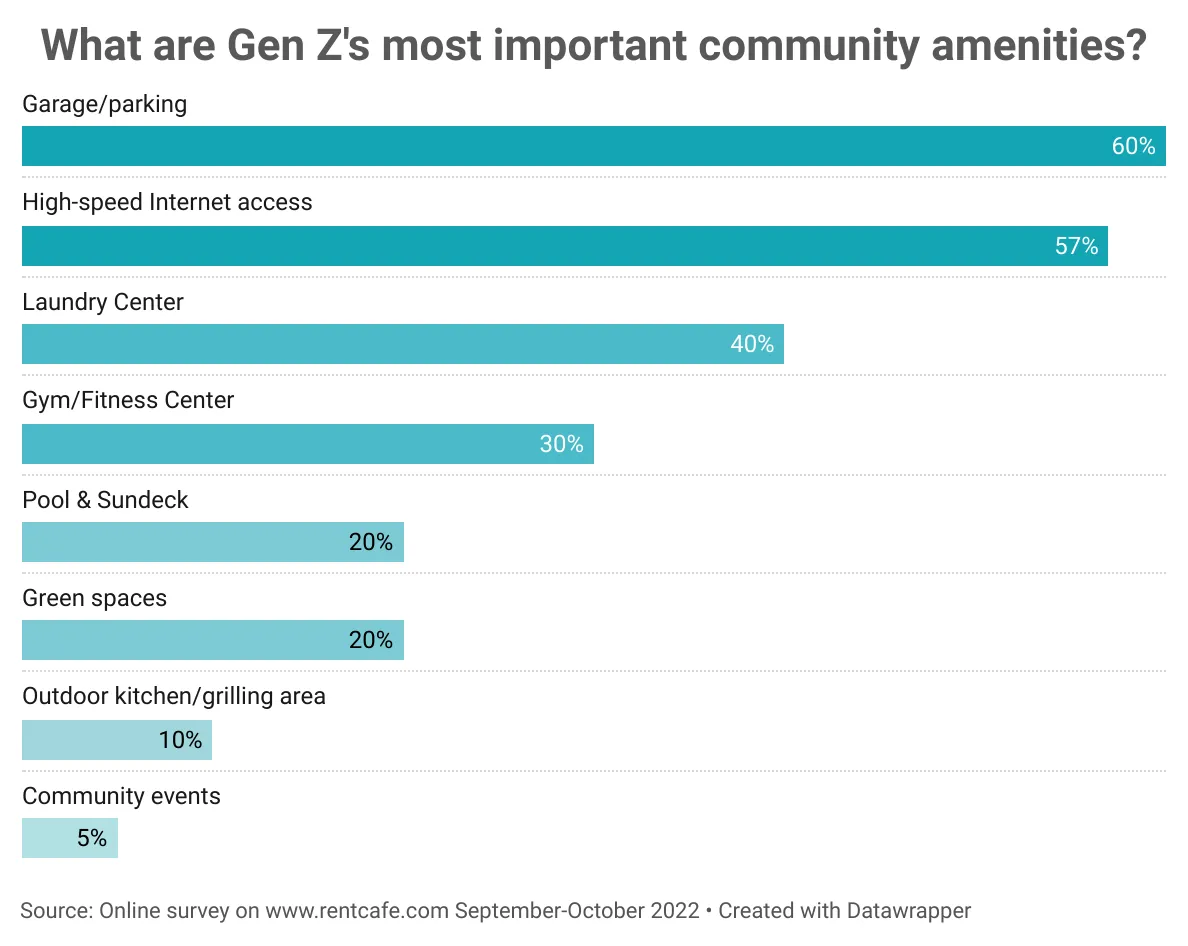
This doesn’t mean that golf simulators are off the table. Amenities are still important, and there hasn’t been a seismic shift in amenity preferences based on generation, according to Ryan Kimura, senior vice president of strategic partnerships at Dallas-based multifamily development and design firm Premier.
“Developers are always looking to develop more useful, efficient amenities to drive revenue, retention and the guest experience. I would say amenities are ever-changing,” Kimura said.
Nor are properties pulling back on the quantity of amenities. Instead, they’re becoming more strategic in their approach, based on what their target demographic wants.
“We’ve seen our market-rate projects shifting away from expansive and under-utilized gym facilities to a bespoke approach; Pelotons, Tonal, and Tempos need far less space,” said Melissa Joerg, project manager at Alameda, California-based architect and designer MBH Architects. “Developers are then taking that space and providing co-working spaces and more community-driven amenities to attract younger renters.”
Social media rules
Among Premier’s current projects is the impending refresh of 1600 Vine in Los Angeles, owned by Palo Alto, California-based real estate investor Klein Financial Corp. Located at the intersection of Hollywood and Vine, the 375-unit building is most famous for catering to social media stars.
To keep the building competitive with newer developments and the ever-changing face of influencer culture, Premier intends to introduce an amenity suite geared to support the residents’ production needs, according to Kimura. This includes an audio recording booth, a photo and media studio and a redesigned coworking space with more intimate seating placements.
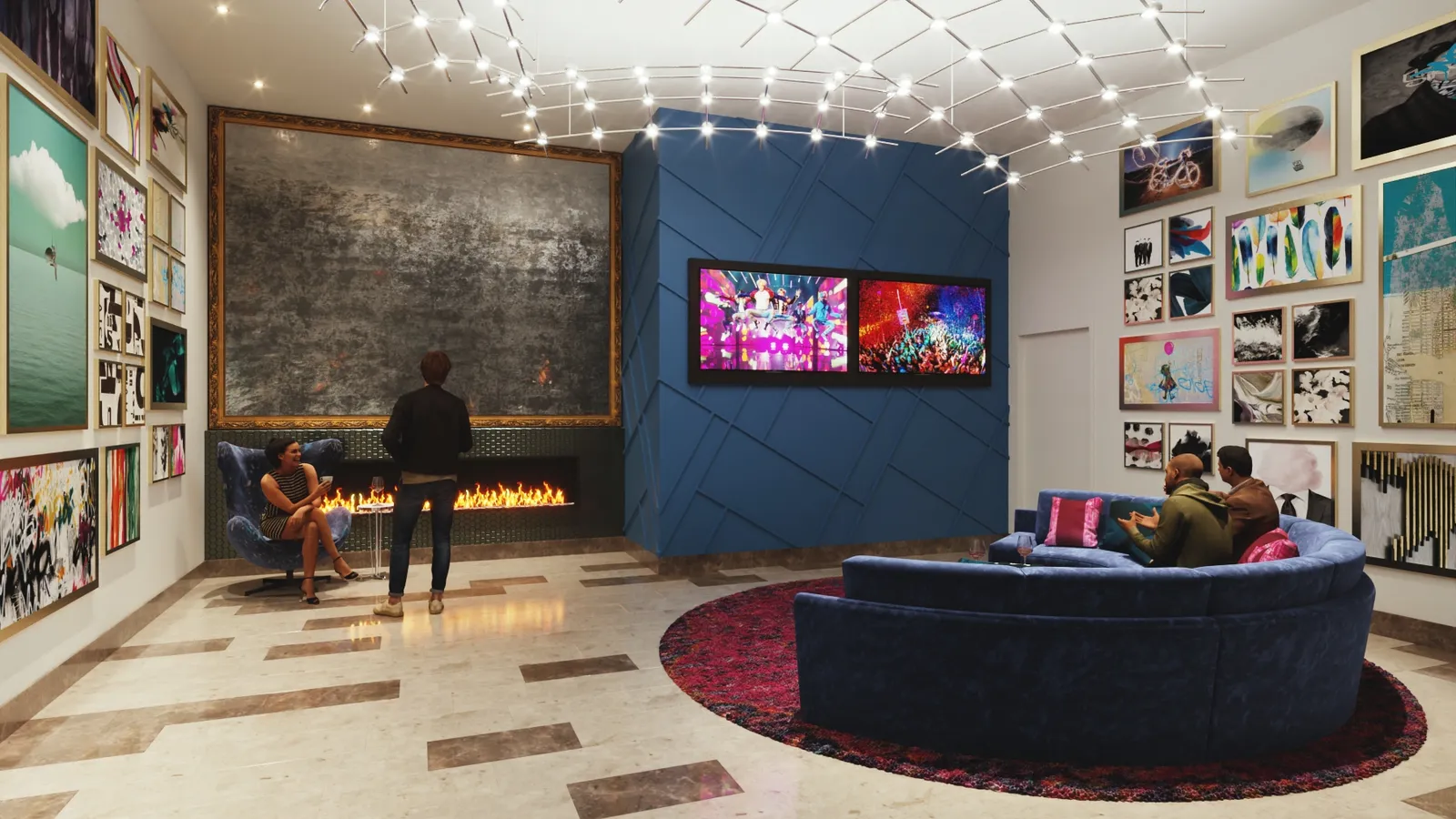
However, another important consideration in the new design — still in the planning stages — is its suitability as a backdrop for residents’ social media posts, something that fosters experiences that they want to share.
This will be accomplished through modernized design elements, gathering spaces and eye-catching setpieces — known to Kimura and other designers as “Instagrammable” locations. The social media room, rideshare room and even the exterior will be designed with this in mind.
“One thing that this property really is trying to gear toward is ... locations that would ever be changing, to keep bringing people back to the same area,” Kimura said. “We're selecting artwork and installing digital features that change perspective throughout the day.”
For example, digital screens have been installed at the exterior corridor of the property to the street and then at the entrance of the residence to display different images. Because the images are constantly changing, it helps draw people back to the corridor, he said.
These Instagrammable focus points have popped up in multiple new developments. At Dey & Bergen, a 242-unit multifamily community in Harrison, N.J., geared toward younger renters, a speakeasy-style lounge features a 1964 Austin-Healey “Bugeye” Sprite sports car as a centerpiece, specifically as something residents will want to photograph and share.
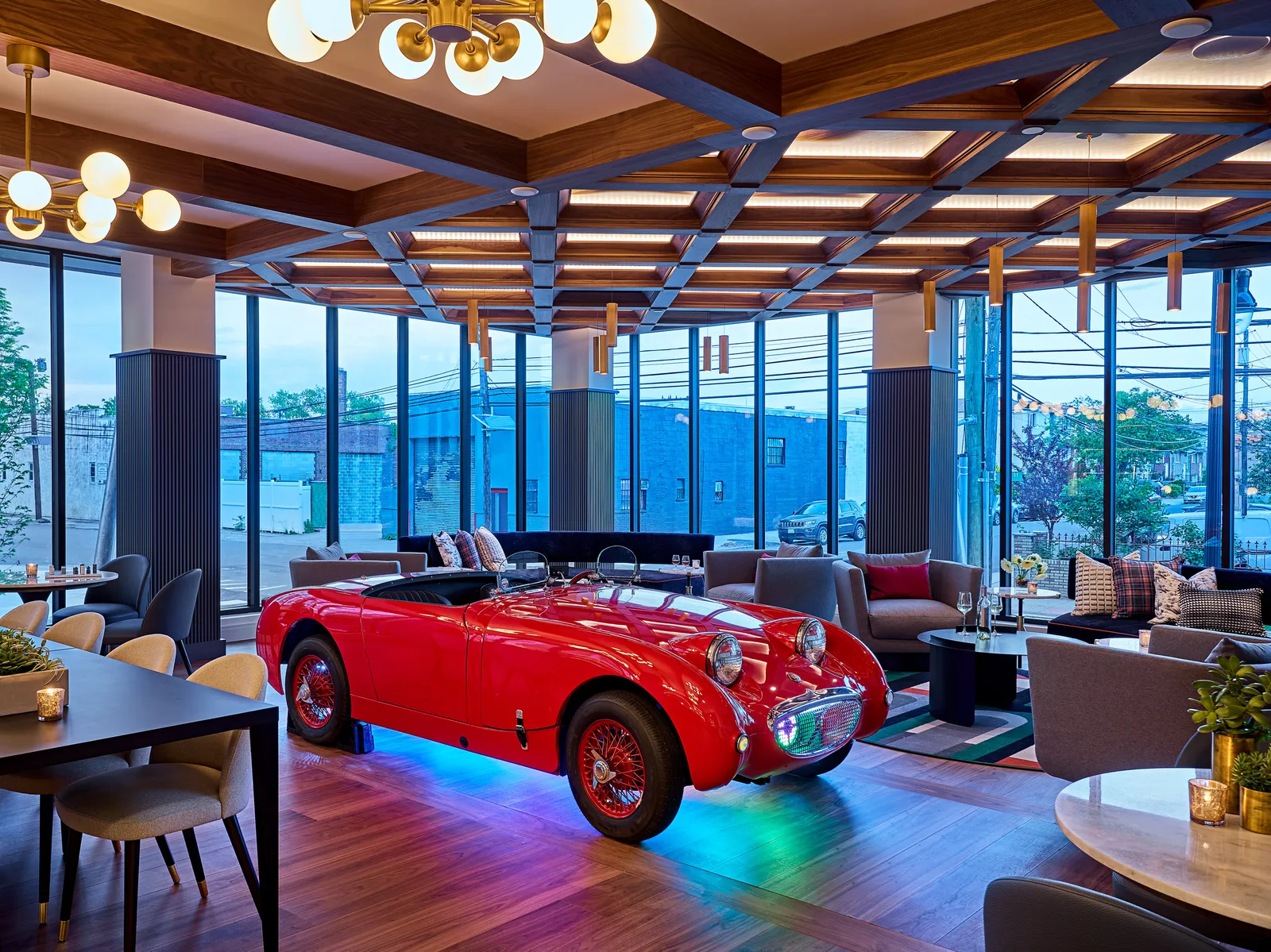
“Because young adults are so tech-focused and digitally connected, they are eager to share their experiences,” said Mary Cook, founder and president of Dey & Bergen’s designer, Chicago-based design firm Mary Cook Associates. “The vintage sports car serves as a unique conversation piece and a popular subject for social media posts, and is a big hit among residents and guests.”
Artistic sensibility
Further north at the Alta ART Tower in Portland, Oregon, developed by Wood Partners, Ankrom Moisan has incorporated the artistic experiences it aims to foster directly into the building fabric. This includes an undulating glass facade with geometric overhangs designed to replicate the look of theater curtains, and a red theater curtain as an accent piece in the expansive lobby.
The property has leveraged its proximity to the Artists Repertory Theater, the previous owner of the development site, to form a partnership to host artistic, theatrical and cultural events at the Alta ART Tower moving into the future.
“Wood Partners, as a national developer, is really interested in cultural enrichment in their projects,” said Isaac Johnson, managing principal at Ankrom Moisan. “And there was this idea that the lobby needed to be more than a lobby. We really saw it as a performance space.”
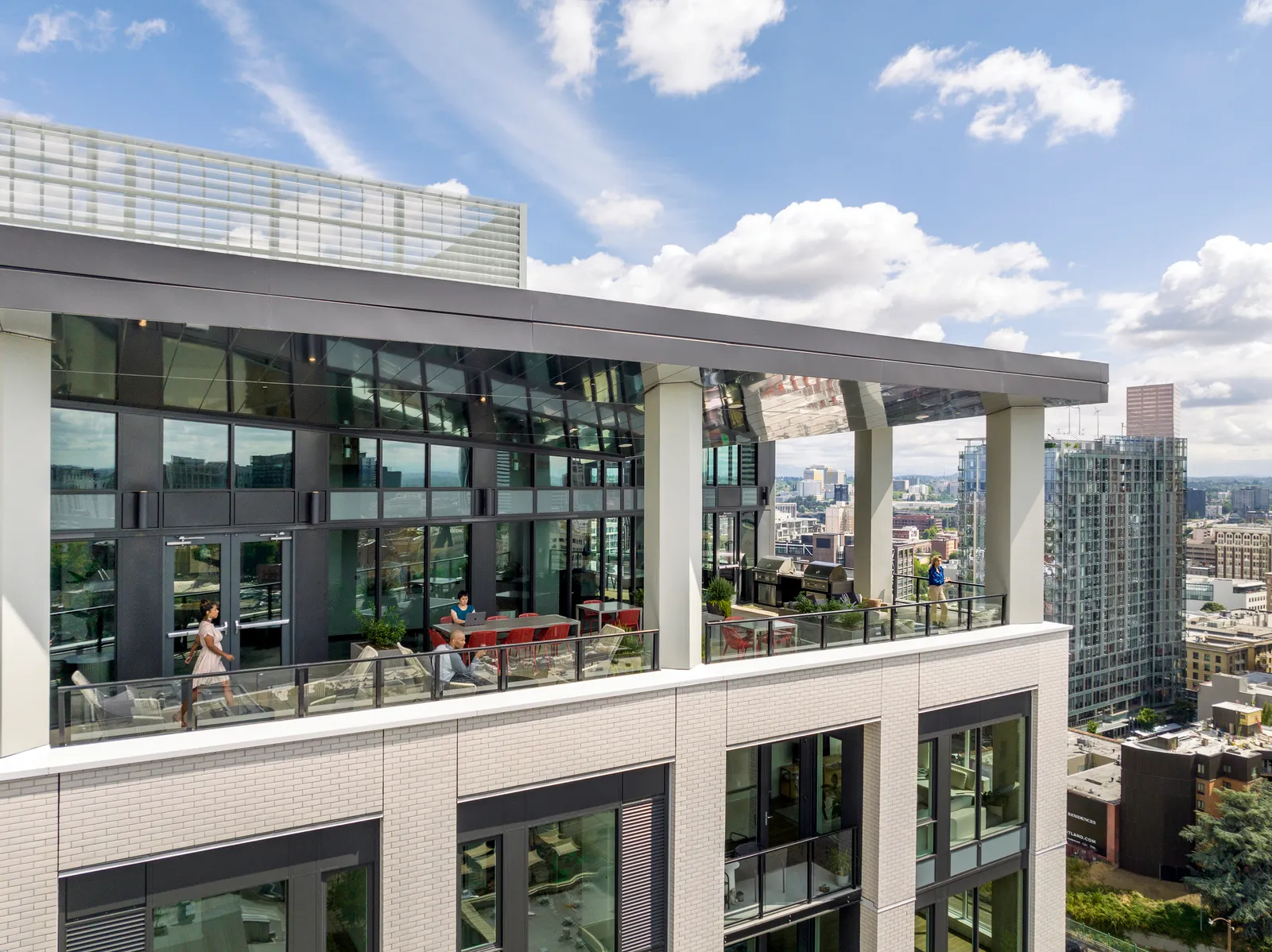
Much like 1600 Vine, the Alta ART Tower counts an audio recording room among its amenities, which could be used for band practice, karaoke, media recording or work calls. These specialized, soundproofed spaces have become more common in newer developments across the country. Not only do they serve the artistic lifestyles of properties like 1600 Vine and Alta ART Tower, but also a growing population of young media producers — influencers or otherwise — who may be drawn to rent in properties with this amenity available.
“I don’t see [audio recording rooms] as a flash-in-the-pan trend,” said John Lewis, practice leader for multifamily architecture at Philadelphia-based designer Nelson Worldwide, which has designed properties with so-called podcast rooms. “People are thirsty for information and entertainment through non-traditional methods…Therefore, space to provide these services will be in demand.”
Sense of place
Tying a property to the surrounding community not only goes a long way in making young renters feel at home, but also makes the building itself part of the fabric of the neighborhood.
Nashville-based development, architecture and design firm The Bradley Projects accomplishes this in two ways. First, the firm ensures that its exterior designs fit into the surrounding architectural context.
“As a multifamily developer, you have to look at, how does this fit in contextually with the neighborhood? How is this going to fit the scale and the needs of the community and not become this giant, generic shoe box that we dropped in the middle of your neighborhood?” said Jared Bradley, president of The Bradley Projects. “My favorite buildings that we’ve ever done, as a company, are the buildings that you cannot pick up and sit anywhere else.”
From there, the most important regional design element, according to Bradley, is the region itself. “The biggest thing is really just capturing views throughout the city [from unit windows. If you can do that, you’re constantly reminded of where you’re at,” Bradley said.
Looking ahead
Mollie Elkman, owner and president of Philadelphia-based home builder marketing firm Group Two Advertising, also recommends incorporating local details into a property’s marketing.
“That doesn’t mean the people with the company necessarily doing a talking head video talking about [a] city,” Elkman told Multifamily Dive. “It could be showing a parade or what’s happening on a Saturday — content that’s less about the brand and more about the lifestyle.”
As a renting cohort, Gen Z is still in its early stages. How its preferences will evolve, and how the younger members will change them, remains to be seen — and experts will keep a watchful eye out for them, especially over the life cycle of a development.
“Some of these projects are five, six, seven years in the making,” Brown said. “You can’t rely just on the things that we're seeing today. We have to really read the signals of what's happening into the future, so that we can better prepare and partner with our clients.”



